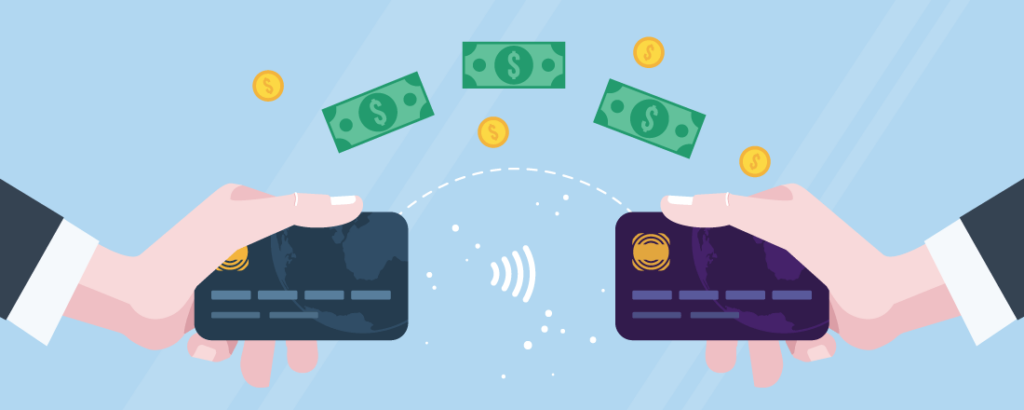Credit card balance transfers: a guide

Let's talk about balance transfers, shall we? If you've been grappling with credit card debt, moving the balance to a new card with a lower interest rate might just be the lifeboat you need. But like everything in the financial world, it's not as straightforward as it seems.
That's why we're here with a guide that's going to walk you through the ins and outs of shifting your debt. Think of it as a friendly chat over coffee, except we're dissecting credit card terms instead of discussing the weather.
We'll cover choosing the best card for the job, strategies to pay down your debt faster than you thought possible, and, of course, the inevitable fees that come with transfers. Ready to dive in?
Why Consider Balance Transfers?
First off, what's all the hype about balance transfers? Well, imagine you're paying 20% interest on your current credit card. Brutal, right? Now, imagine you could move that balance to a new card charging 0% interest for 12 months. That's a year of not paying interest, which can significantly lower the amount you owe.
It's a strategy that, when used wisely, can help you get out of debt faster. Plus, it simplifies your finances by consolidating your debt onto one card.
But (and there's always a 'but'), not all balance transfers are created equal. Which brings us to...
Choosing the best card for balance transfers.
The Right Card for Your Debt
Picking the perfect card for a balance transfer is like finding the right partner for a three-legged race; compatibility is key. You're looking for low to no transfer fees, a long 0% interest period, and a card that actually accepts your current debt amount.
You might think, "The more, the merrier!" when it comes to the length of the 0% interest period. However, it's also crucial to consider what the rate will jump to after the promotional period ends.
Therefore, an informed choice requires understanding your own debt situation and how you plan to tackle it. And yes, there are fees involved.
Understanding balance transfer fees.
Navigating Through Balance Transfer Fees
Transferring a balance isn't free. Surprise, surprise. Most cards charge a fee based on a percentage of the balance you're moving. This fee is often around 3% to 5%, which can add up quickly depending on the size of your balance.
Here's where a bit of math comes in handy. Calculating whether the fee costs less than what you’d pay in interest on your current card can help you decide if a transfer makes sense. Sometimes, a balance transfer offer might seem great, but the fees could eat into your savings.
Now, armed with the knowledge of potential fees, you're better equipped to make a decision.
Strategizing Your Debt Repayment
So you've transferred your balance. Congrats! But the work doesn't stop there. Having a solid plan to pay down your debt is crucial. This might involve budget adjustments, finding additional income sources, or prioritizing your spending.
Allocating more than the minimum payment towards your debt each month can significantly decrease the amount of interest you pay in the long run. Even small additional payments can make a big difference over time.
And for some strategies on turbocharging your debt repayment plan...
Strategies for paying down debt faster.
Conclusion: Making Balance Transfers Work for You
Balance transfers can be a powerful tool in your financial toolkit, but like any tool, they need to be used correctly. It boils down to understanding the terms, picking the right card, navigating fees, and having a solid payoff plan.
Remember, the goal is not just to move the debt around but to pay it off faster and with less interest. So, take advantage of this strategy wisely and watch your debt shrink before your eyes.
Debt freedom is possible, and you've got this!
{FAQ}
{FAQ_ITEM}
{FAQ_TITULO}Pergunta 1{/FAQ_TITULO}
{FAQ_CONTEUDO}A balance transfer involves moving the balance from one or more credit cards to another card, often with a lower interest rate. It's a strategy used to save on interest payments and consolidate debt.{/FAQ_CONTEUDO}
{/FAQ_ITEM}
{FAQ_ITEM}
{FAQ_TITULO}Pergunta 2{/FAQ_TITULO}
{FAQ_CONTEUDO}The ideal card offers a lengthy 0% interest period, low to no balance transfer fees, and a high enough credit limit to accommodate your existing debt.{/FAQ_CONTEUDO}
{/FAQ_ITEM}
{FAQ_ITEM}
{FAQ_TITULO}Pergunta 3{/FAQ_TITULO}
{FAQ_CONTEUDO}Yes, they usually do. The fee is typically a percentage of the transferred amount, generally between 3% and 5%. Calculating if the fee costs less than staying with your current interest rate is key.{/FAQ_CONTEUDO}
{/FAQ_ITEM}
{/FAQ}
Balance transfers: Your First Step to Freedom from Debt
Embarking on the journey of balance transfers can feel daunting at first. But with the right information and a bit of planning, it can lead to significant savings and faster debt elimination.
Remember, the goal is not just to transfer the balance but to strategically use the lower interest rate as a tool to become debt-free sooner. With a little discipline and perseverance, you can turn the tide on your debt and start working towards a financially secure future.
So, take that first step, choose wisely, and let balance transfers work for you. Happy transferring!
And remember, every step towards paying off your debt is a step towards financial freedom. Keep pushing forward!

Related